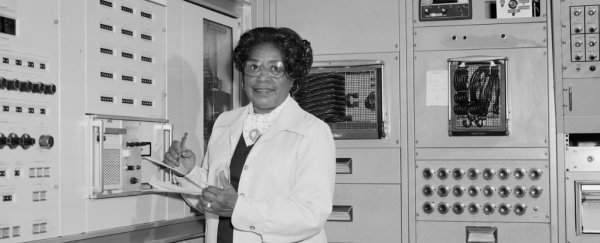When Mary Jackson began her career as the first Black female engineer at NASA, she was relegated to a computer lab segregated from the rest.
Nearly seventy years later, those visiting the United States' space agency in Washington DC must drive up Hidden Figures Way to what is now called the Mary W. Jackson NASA Headquarters.
The new name was announced on Wednesday by NASA administrator Jim Bridenstine, and it comes at a historical time in the Black Lives Matter movement.
"Today, we proudly announce the Mary W. Jackson NASA Headquarters building," said Bridenstine in a statement.
"Hidden no more, we will continue to recognise the contributions of women, African Americans, and people of all backgrounds who have made NASA's successful history of exploration possible."
Jackson grew up in Hampton, Virginia and her passion for science drove her to complete a dual degree in maths and physical sciences. Working as a teacher at a Black school in Maryland, Jackson was determined to get more young students of colour interested in science.
Her own science career took a less than direct path. Working for a bit as a bookkeeper, a mother, and an Army secretary, Jackson at last landed a job at the Langley Memorial Aeronautical Laboratory in 1951. Dorothy Vaughan, another Hidden Figure, was her supervisor.
For two years, Jackson worked as a 'human computer', before moving on to help engineer a supersonic pressure tunnel. She begun studying graduate level maths and physics in her spare time - but as it was at a then-segregated high school, Jackson had to get special permission to learn in the same classroom as her white peers. Jackson completed the course and was promoted to becoming NASA's first Black female engineer in 1958.
At that time, NASA says she may have been the only Black female aeronautical engineer in the field. Not satisfied with her own success, Jackson went on to lead programs that helped to hire and promote the next generation of women at NASA.
Jackson died in 2005 at the age of 83, and in 2019, she was posthumously awarded the Congressional Gold Medal.
"We are honoured that NASA continues to celebrate the legacy of our mother and grandmother Mary W. Jackson," said Jackson's daughter Carolyn Lewis.
"She was a scientist, humanitarian, wife, mother, and trailblazer who paved the way for thousands of others to succeed, not only at NASA, but throughout this nation."
It's not just Jackson that NASA is celebrating, either. Last year, a bipartisan bill renamed the street in front of NASA headquarters to Hidden Figures Way, and a couple years before that 99-year-old mathematician Katherine Johnson personally opened a new state-of-the-art computer research facility bearing her own name.
"Over the years NASA has worked to honour the work of these Hidden Figures in various ways, including naming facilities, renaming streets, and celebrating their legacy," added Bridenstine.
"We know there are many other people of colour and diverse backgrounds who have contributed to our success, which is why we're continuing the conversations started about a year ago with the agency's Unity Campaign. NASA is dedicated to advancing diversity, and we will continue to take steps to do so."
